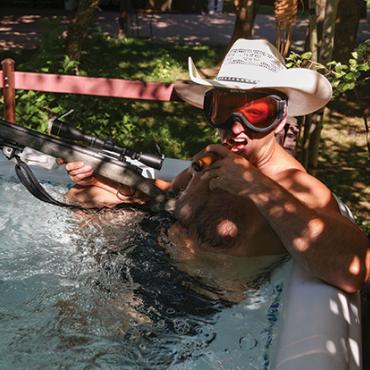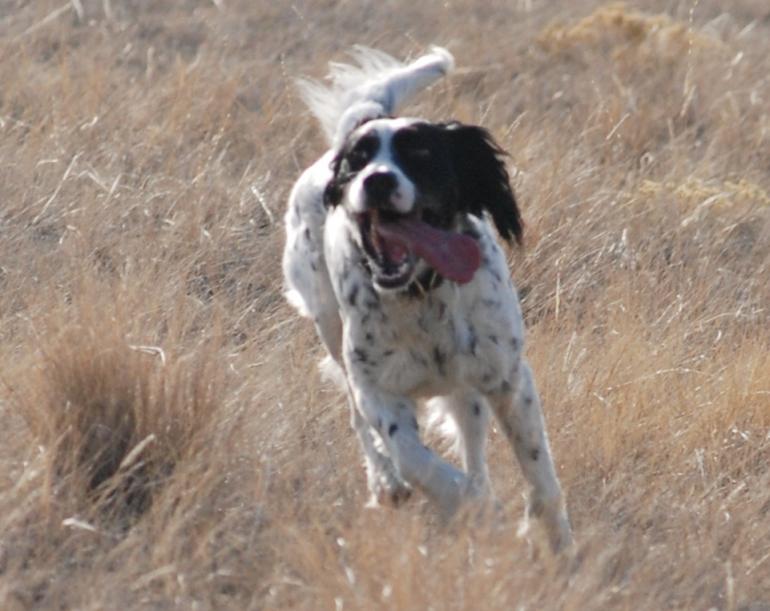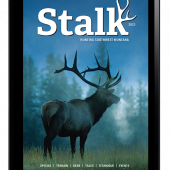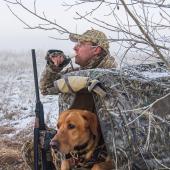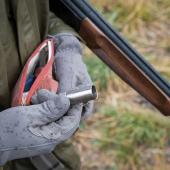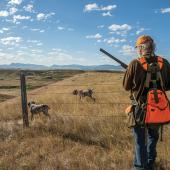Training the Trainer
Buck is what many people would call a “problem dog.” Though attractive and well-built, he’s also hyperactive, unruly, and stubborn as a mule. For two days, we’ve watched him leap and lurch, surge and struggle—a spigot of concentrated energy discharging itself in every direction. Even his owner John admits that Buck hails from the underworld.
So when Rick Smith, the world-renowned bird-dog trainer and leader of the clinic we’re attending today, asks, “Who’s next?” we all instinctively look at Buck, tied up across the yard. John walks over to get him, and from the second he makes contact, it’s a battle. We’re all watching intently, wondering how Rick’s going to deal with this dog. We’ve seen him work half a dozen other dogs—each with its own style of insubordination, its own particular problem area—but Buck’s another story altogether.
Buck gives Rick all he’s got, lunging and thrashing like a caged wolverine. But Rick remains calm, patiently working through the resistance. Not a word is spoken, nor a hand laid on the dog—just a composed demeanor and a firm grip on the training leash. Rick’s using the Silent Command System, his signature approach to dog training, and it works like a charm—within a few minutes, Buck’s defiance is broken. Though still bristling with energy, he no longer jumps or whines. He moves where Rick wants him to move, and stays when Rick wants him to stay. The transformation is remarkable.
Even more remarkable, though, is how quickly it happened, using simple techniques anyone could master. And that, of course, is why we’re here, at True Grit Brits Kennel north of Bozeman, attending the Rick Smith Foundation Basics Seminar—not to have our dogs trained, but to learn how to train them ourselves. After witnessing Rick’s demonstration, and the accumulated instruction from a weekend of “training the trainer,” John will now be able to apply the same methods at home, hopefully converting Buck from a problem dog into an obedient, productive bird dog. With concentration and commitment (and a little luck), he’ll become a “brag dog”—the quintessential bird dog, the kind that inspires awe among bird hunters the world over. “He’s got the instincts,” Rick assures John, “what you need to do now, is teach him to pay attention and surrender to your leadership.”
This has been a recurring theme throughout the weekend, and is one of the fundamental precepts of Rick’s training methodology. “Dogs don’t mind being told what to do,” he explains, “they don’t mind us being in charge—they just need to learn to avoid distraction, to chill out and pay attention.” When that happens, he says, the rest comes easy—they listen to you and comply with your commands. Rick’s been successfully demonstrating this concept since the seminar began, taking several of our dogs and correcting their undesirable habits within minutes—but after watching him subdue Buck, we’re all pretty well sold on the idea. “Some dogs will test you, they’ll be unruly,” he says. “That doesn’t mean they’re bad dogs, or that they won’t make fine bird dogs.” The point is, we can’t blame or judge our dogs for their behavior; instead, we have to learn how to be good trainers, how to help our dogs realize their inherent potential. “All it takes is time,” says Rick, and looking down at Buck, he adds, “and plenty of patience.”
Rick Smith is a big Texan with a big Texas accent—though Oklahoma-born, he’s lived in the Lone Star State long enough to claim it as his own. He has a slow, deliberate manner—a country simplicity and John-Wayne air of confident, unassuming authority. Like most folks from that part of the country, his down-to-earth demeanor makes you feel immediately comfortable. A third-generation dog trainer, Rick likes to joke that he was whelped into bird dog training. His methods have been proven in over 25 open championships and hundreds of success stories from satisfied students. Over the course of the weekend, Rick explains the details of the Silent Command System, how the idea is to build a common language between us and our dogs, avoiding anything that may confuse them—English, for example. “Don’t distract your dog with a language he doesn’t understand,” he tells us. “Build a conditioned response to body language—his language—and the training will be that much easier.”
Nowhere does this principle come into play more than with the command lead. Short, rigid, with a slip-knot on the end, the command lead allows you to apply pressure to the head and neck, encouraging the dog to relieve the pressure by going where you want him to go. “There’s no need to yell or get physical with your dog,” Rick explains, “just apply stimulation and let the dog learn to move away from it.” In this way, he says, our dogs learn to respect us as fair and competent leaders, thus increasing obedience and strengthening the bond between man and
animal.
Working the command lead on our own dogs, moving across the True Grit Brits five-acre training field, we learn how to let them read our body language, teaching them to surrender to our leadership and follow our silent commands. Looking around, I’m amazed by the immediate success people are having with their dogs—moving together, stopping together, quartering, turning, heeling, all without a word. It’s a remarkable thing, the quiet communication, that intuitive understanding between dog and man—you watching him, him watching you, a shared, focused enthusiasm propelling you together toward a common goal. In the field, with birds flying and guns blaring, the intensity of that connection increases exponentially. It’s moments like these that make hunting with a dog one of life’s most rewarding experiences—and owning a poodle seem the ultimate absurdity.
Eventually we advance to the checkcord—a longer rope designed for use after the dog has mastered the close proximity of the command lead. Rick shows us how to quarter the dogs in front of us, how to cover more ground and allow more distance between them and us while still maintaining control. Ultimately, Rick explains, we’ll wean the dog of the rope completely—but for now, this is an important intermediary step. We move around the field, looking for pigeons hidden in the grass, learning how to teach our dogs the basics of birdhunting: sniffing out the birds, holding point and remaining still after the flush, and honoring other dogs’ points or flushes. It’s overwhelming, all the information, the myriad aspects of hunting with a dog, but Rick keeps us centered. “Remember, what we’re doing in one weekend, you’ll want to spread out over weeks or even months. A good bird dog will take years to develop—but it’ll be worth it in the end.” This is just a crash-course in the techniques, he reminds us, and it’s up to us to apply them one at a time. But the same simple, straightforward training principles apply, no matter what the step in the training sequence.
Hearing this, it occurs to me how easily Rick Smith could horde his secrets, relegating the Silent Command System and its incredibly effective simplicity to the realm of private, in-house training—available only to dogs whose owners pay big bucks for a “finished” bird dog. But Rick’s a bird hunter, and all bird hunters love to share the thrill of the hunt—that indescribable delight of man and beast working a field together, communicating silently and perfectly amid the sudden, heart-stopping explosions of birds into the air. And this, I can only imagine, is what keeps him traveling around the country, from one airport to the next and one town to the next, teaching his methods to others, showing us how to turn our dogs into the bird hunters they were born and bred to be.


